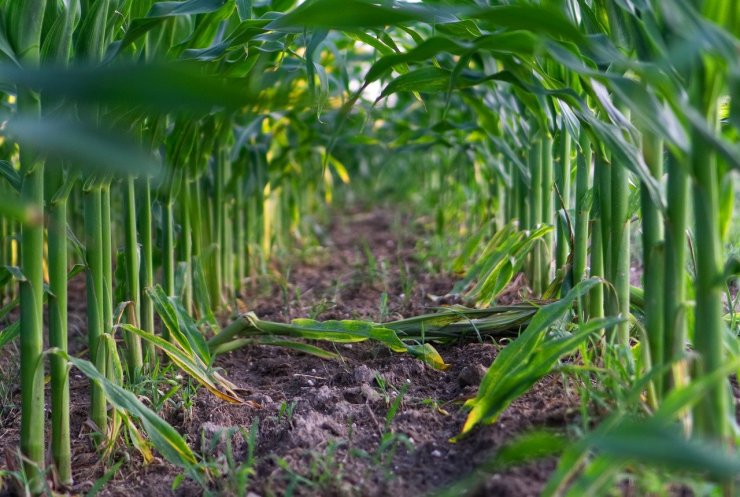
Young Corn Stalks
The Right Sunlight for Your Corn
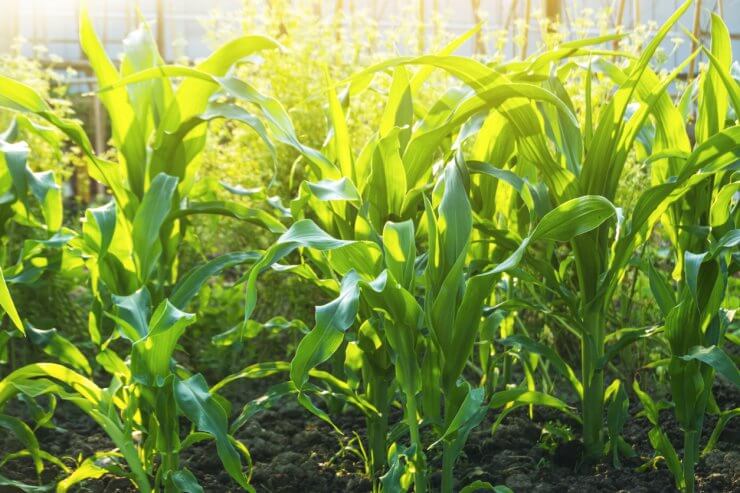
Corn in sunlight
Corn plants need a lot of sun, at least eight hours of full daily sun exposure, and 10 hours is even better. If you want your corn to grow as high as an elephant’s eye—and produce lots of plump, juicy ears—select a part of your yard that offers plenty of sunshine all day.
Sunlight also warms the ground and promotes seed germination. And, it promotes the best growth and photosynthesis in the limited number of leaves on each corn stalk.
Starting Right with the Right Soil
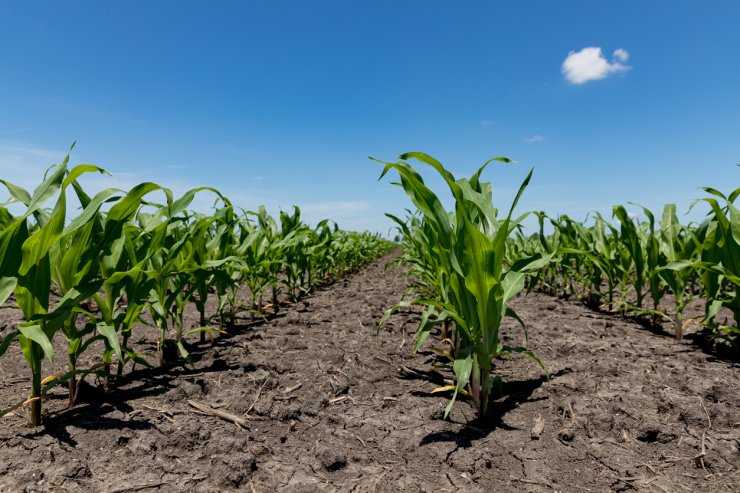
Corn in loamy soil
Having healthy, thriving corn plants starts with having rich, moist soil that drains well. Ideal soil for growing corn is well-drained, sandy loam with a pH between 5.8 and 6.8.
Adding organic matter such as compost to the soil is a great way to provide nutrients and drainage. If possible, add compost or aged manure to your growing area the fall before you plant. Corn needs high levels of nitrogen to properly grow and develop, so it’s a good idea to add nitrogen to your planting area or beds at planting time or during the growing season. If the leaves on your corn plants turn yellow, that’s a sign they need more nitrogen. Dress the soil with amendments like fish emulsion, chicken manure, or compost.
When the plants are about 2 feet tall, apply 1 cup of fertilizer for every 10 feet of garden row. Scatter the fertilizer evenly between the rows, mix it lightly with the soil, and water after fertilizing.
Remember, soil health is one of the most important things to ensuring that your corn plants thrive and produce quality and quantity. Don’t skip this step!
Planting Corn
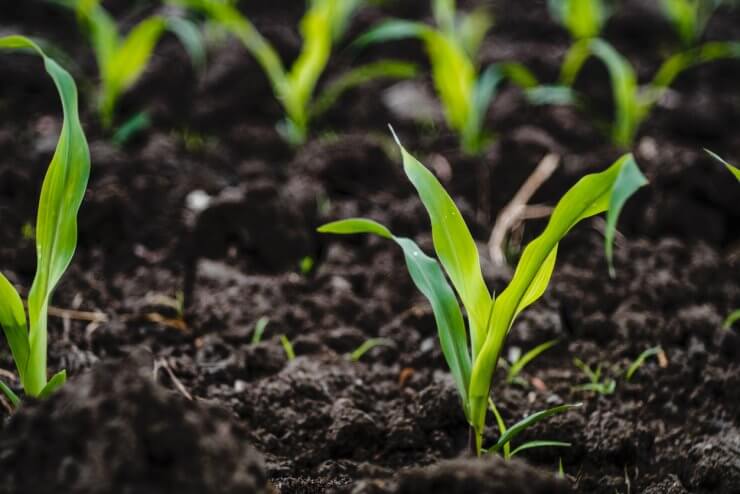
Corn seedlings, spaced and thinned out
Planting can begin two weeks after the last frost date for your zone. If you’re direct-sowing seeds, the soil must be 60 to 65 degrees (F), or the seeds won’t germinate. Planting seedlings at or above this temperature will help avoid seedling rot.
Plant corn seeds about 1 inch deep and 3 to 4 inches apart in the row. Plant two seeds in each hole in case one doesn’t germinate. Space the rows 2 to 3 feet apart. After the plants are up, thin them to 1 foot apart. If you plant them closer, your corn will have small, poorly filled ears. If you’re planting seedlings, place them 12 inches apart.
After the corn seeds sprout you’ll need to thin them so your crop doesn’t become overcrowded. Don’t pull up the extra plants as you might damage the others’ tender roots. Instead, snip the seedling off at soil level, using clean shears.
The Three Sisters
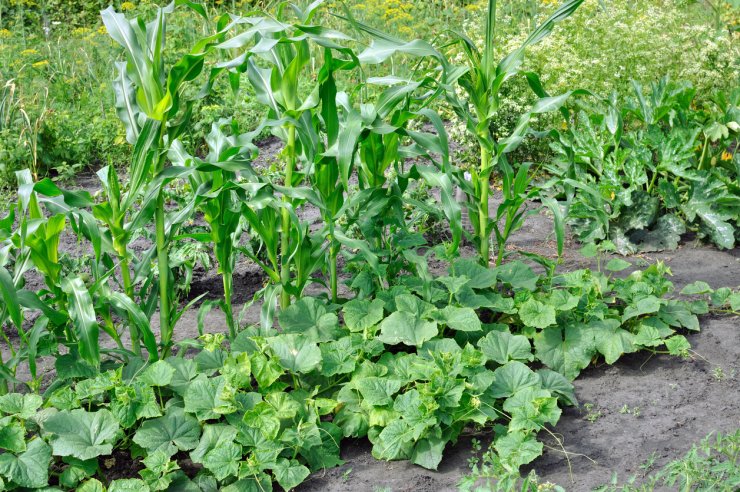
The Three Sisters planting method
When it comes to planting corn with other plants, the Three Sisters combination—corn, beans, and squash—is a classic handed down from the Native Americans. These plants not only grow harmoniously with each other, each has a role to play. The corn serves as support for the bean vines; the squash provides ground cover, preventing weeds from growing; and the beans provide fertilizer for all three.
How—and When—to Water Your Corn Plants
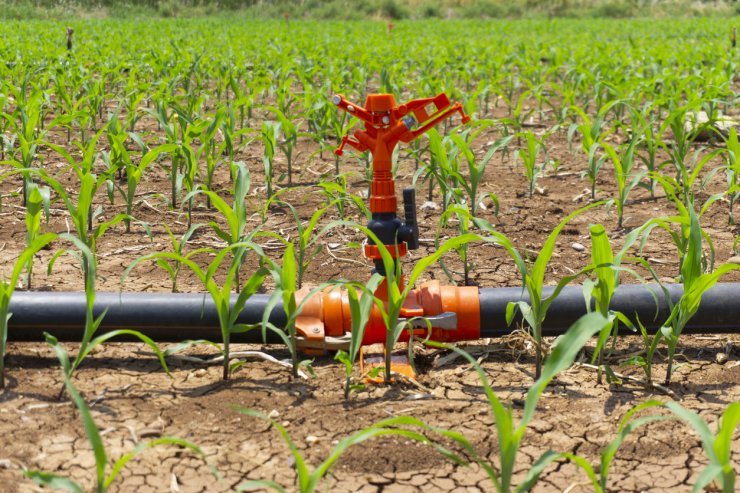
Irrigation system for corn
All plants need water, but corn—which loves the sun—also needs regular drinks of water, about 1 inch a week, especially when the ears begin to tassel. Insufficient water during pollination can result in ears with missing kernels. Because corn is grown in blocks, it’s often easier and more efficient to water with soaker hoses or drip irrigation. Avoid spraying water over the tops of the plants as that can wash away the precious pollen from the tassels.
If your plant leaves look limp or withered, that’s a sign they’re thirsty.
Have you ever had problems fertilizing or watering your corn plants? Please tell us your secrets for getting a good corn crop from your garden.


 Previous
Previous

